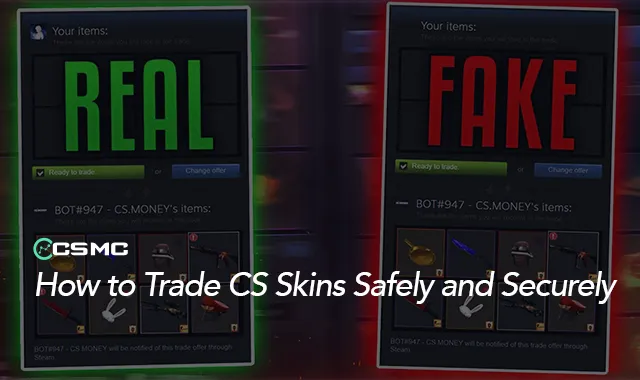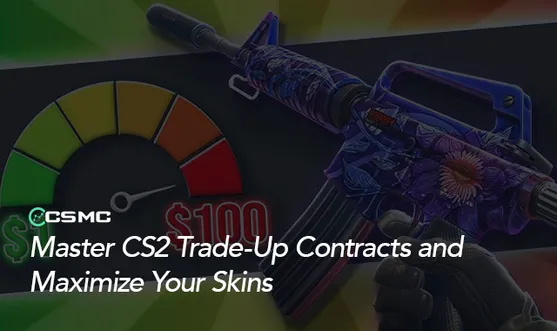Explore the fascinating world of CS skin trading with our in-depth guide. Learn how to safely navigate the marketplace, spot potential risks, and keep your valuable skins secure. Whether you're just starting out or you're an experienced trader, this article will provide you with the knowledge and tools you need to trade with confidence.
How to Trade CS Skins Safely: Essential Tips for Secure Exchanges
CS skin trading has become a key part of the gaming world, offering players the chance to customize their weapons and even make a profit from rare items. However, with this surge in popularity comes a higher risk of scams and fraud. This article will cover the basics of safe CS skin trading, guiding you through the market while ensuring your valuable inventory remains protected.
Understanding the Basics of CS Skin Trading
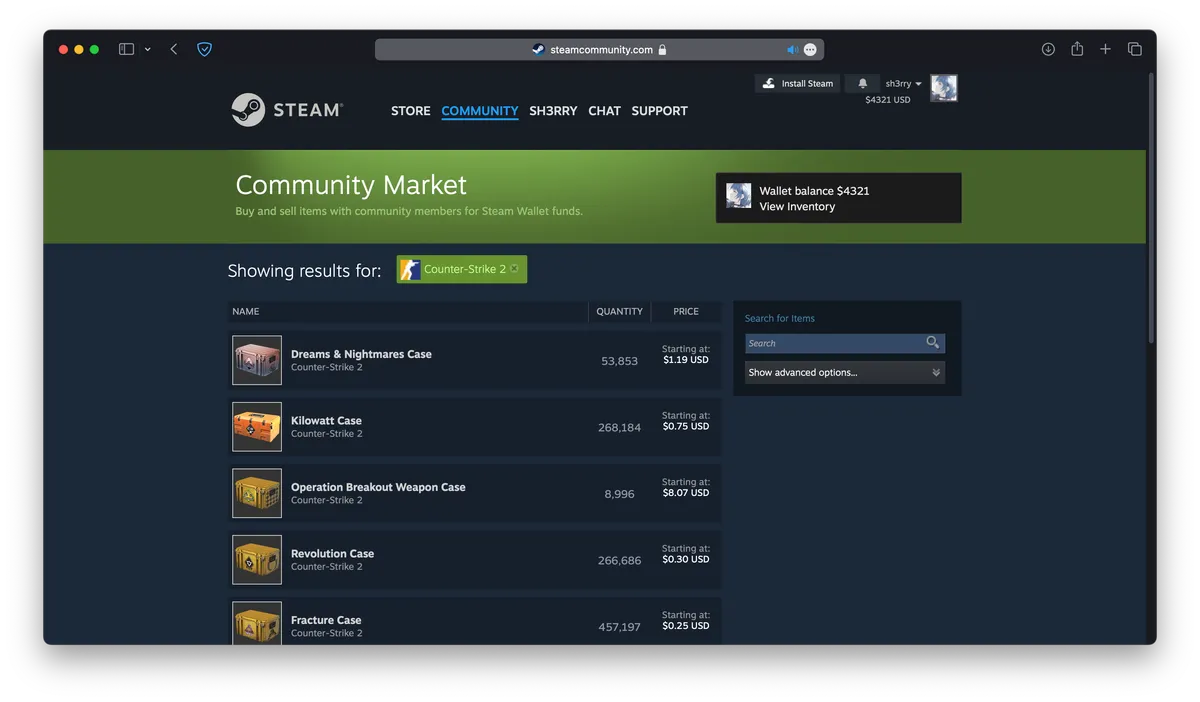
CS skins are cosmetic items that allow players to change the appearance of their weapons in the game Counter-Strike 2 (CS2). Players can acquire these skins through in-game drops, opening cases, or trading with others. The primary platform for trading skins is the Steam Marketplace, where players can buy, sell, and exchange skins directly.
The Steam Community Market is the official hub for trading CS skins. Yet, many third-party websites have sprung up, promising extra features and possibly better deals. While these platforms can offer perks, they also come with higher risks that traders need to be mindful of.
Recognizing Common Scams
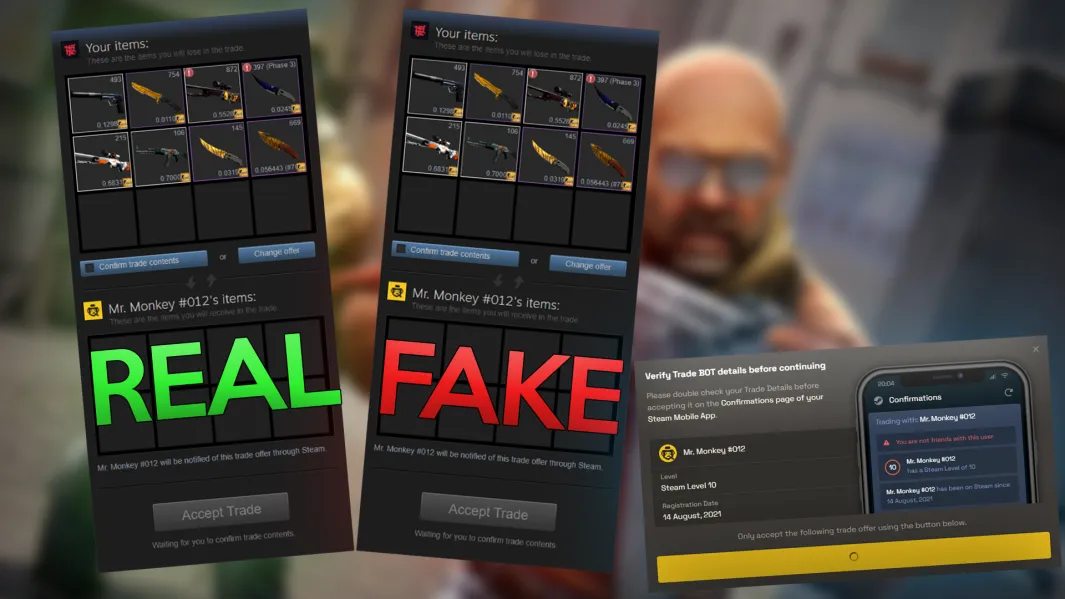
To trade CS skins safely, it's essential to recognize common scams:
Phishing links: Scammers often use fake login pages that mimic Steam or trading sites to steal account credentials.
Fake trading websites: Some sites look legitimate but are designed to steal skins or personal information.
Impersonation scams: Fraudsters might pretend to be trusted traders or friends to deceive you into an unfair trade.
API scams: Scammers exploit Steam's API to manipulate trade offers and steal valuable items.
Fake middleman services: Some scammers offer to act as intermediaries in high-value trades, only to vanish with the items.
Best Practices for Safe Trading
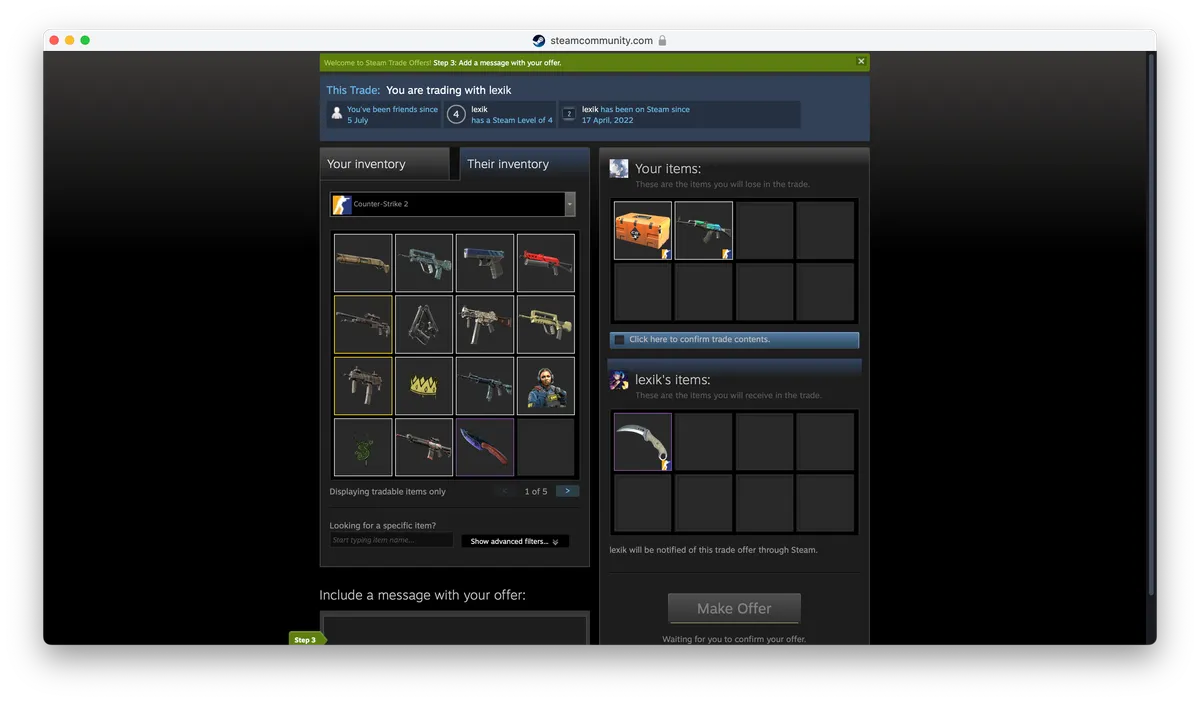
To keep yourself and your inventory safe, consider these essential tips
Using Trusted Platforms:
Stick to the Steam Community Market for the most secure trading experience.
If you venture onto third-party sites, make sure to research their reputation thoroughly and ensure they have robust security measures in place.
Verifying Trade Partners:
Always confirm the identity of your trading partner via their Steam profile.
Look into their trading history, account age, and community standing.
Be cautious of profiles that are private or have limited information.
Secure Trade Procedures:
Double-check every trade detail before you confirm, including item conditions and float values.
Prefer using Steam's built-in trade offer system rather than direct trades.
Activate and use Steam Guard two-factor authentication for added security.
Never rush into trades, especially if they seem too good to be true.
Utilizing Trade Protection Tools

Enhance your trading safety on Steam and reputable third-party platforms with these tools:
Trade hold periods: Steam imposes a hold on trades between users who haven't been friends for long, allowing you to cancel if anything looks suspicious.
Mobile confirmations: Use the Steam mobile app to confirm trades, adding an extra layer of security.
Inventory history: Regularly check your inventory history to catch any unauthorized transactions.
Steam Guard: Enhance your account security with email or mobile authentication.
Trade offer notifications: Enable notifications to stay updated on incoming trade offers and potential scams.
What to Do If You Get Scammed
If you fall victim to a scam, act quickly:
Change your Steam password and revoke API keys.
Contact Steam Support and report the incident with as much detail as possible.
Report the scammer's profile and any related websites or links.
Document all evidence, including chat logs and trade history.
Warn your friends and the community about the scammer's methods.
Recovering lost items is often difficult, but reporting scams helps protect other users and can lead to the scammer’s account being banned.
Conclusion
Trading CS skins can be both exciting and rewarding, but safety should always come first. By understanding the basics of skin trading, recognizing common scams, and following best practices, you can greatly reduce the risk of being scammed. Always use trusted platforms, verify your trading partners, and make full use of the security tools provided by Steam and reputable third-party sites. Stay vigilant, trade wisely, and enjoy the world of CS skin trading with confidence.
